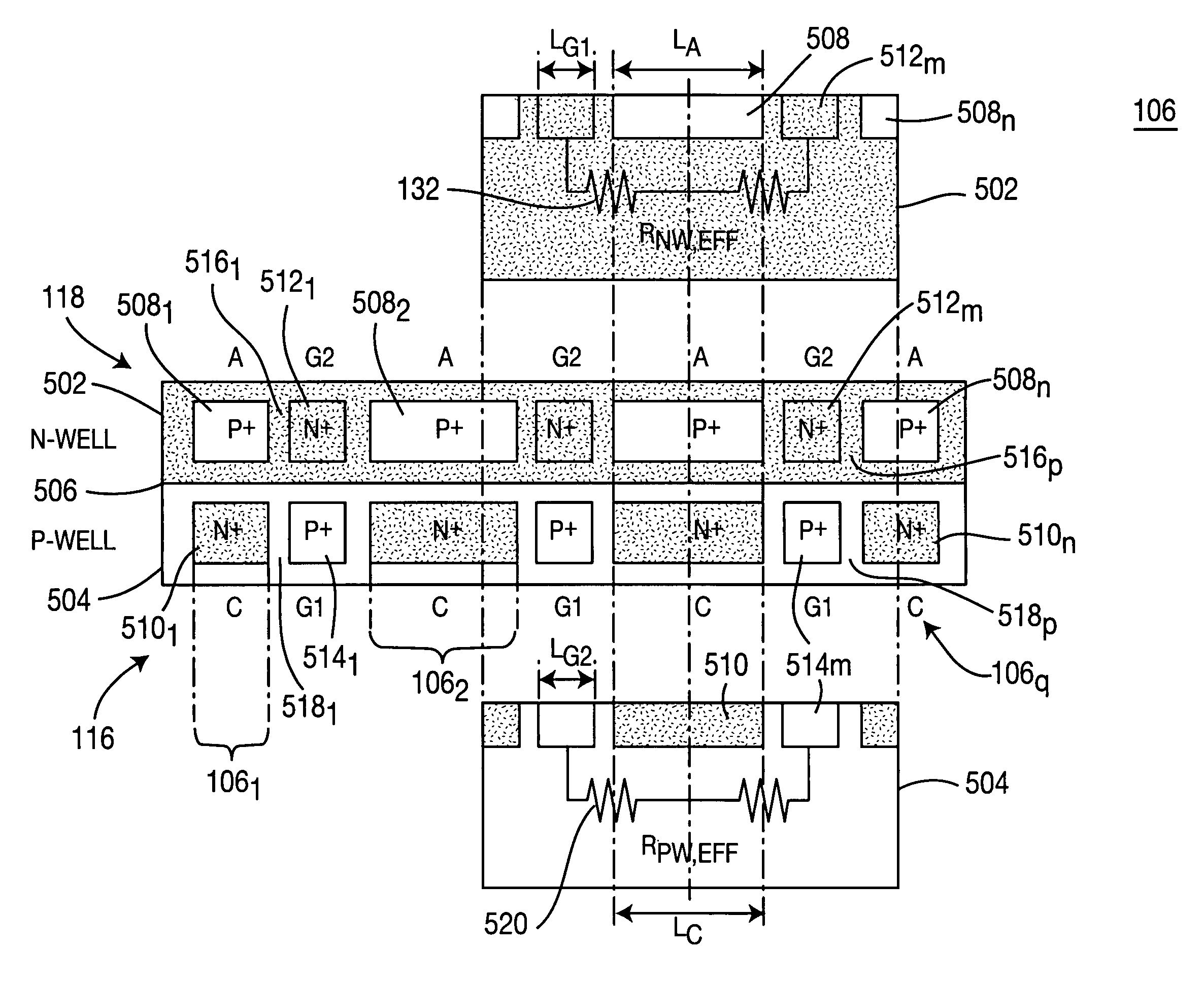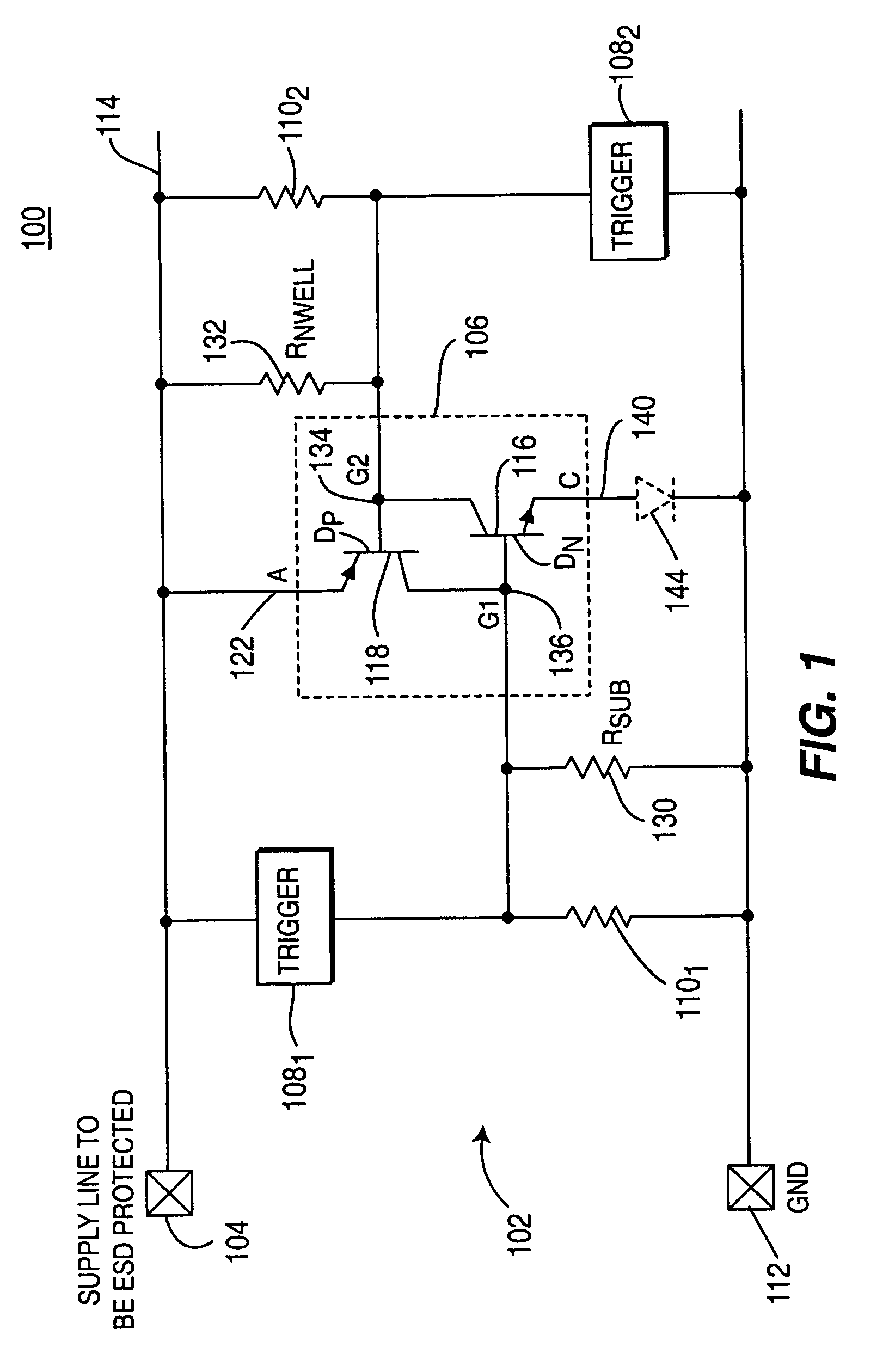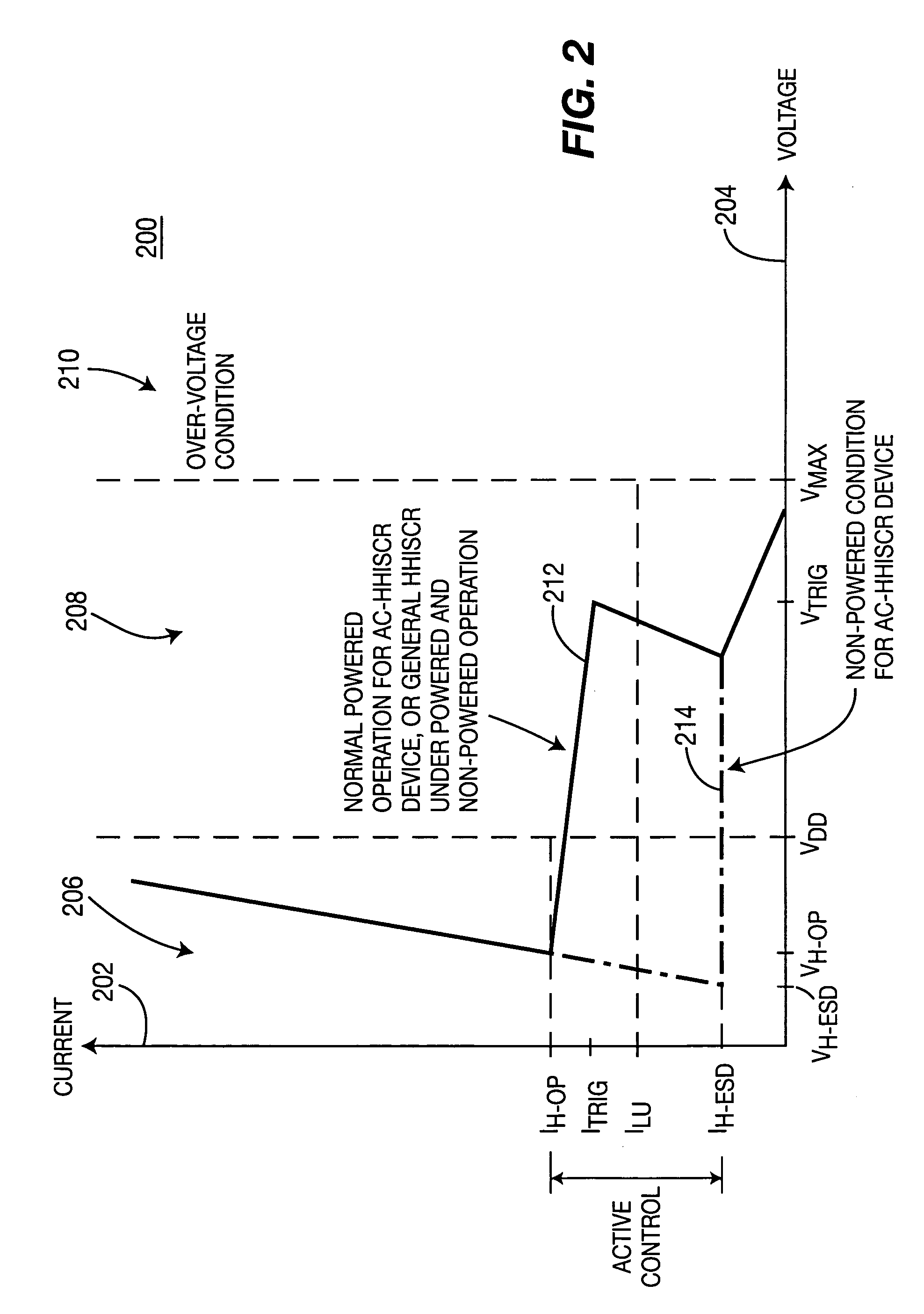Electrostatic discharge protection structures having high holding current for latch-up immunity
a protection structure and electrostatic discharge technology, applied in the direction of emergency protection circuit arrangement, transistor, etc., can solve the problem of uncontrollable triggering, voltage shorting to ground, and unintentional latching of scrs as esd protection devices during normal operation conditions, etc., to achieve high holding current
- Summary
- Abstract
- Description
- Claims
- Application Information
AI Technical Summary
Benefits of technology
Problems solved by technology
Method used
Image
Examples
third embodiment
[0033]Alternatively, where the second gate 134 of the SCR 106 is used, a second trigger device 1082 is coupled between the second gate G2134 and ground 112, while a second low resistance shunt resistor 1102 is coupled from the voltage supply line 114 to the second gate G2134. In a third embodiment and as shown below in FIG. 3, both first and second trigger devices 1081 and 1082 and the low resistance shunt resistors 1101 and 1102 are respectively coupled to the first and second gates 136 and 134 as described above.
[0034]In one embodiment, the trigger devices 108 may be MOS devices, e.g., a grounded gate NMOS (GGNMOS) device or a source-connected gate PMOS (SGPMOS) device. Alternatively, the trigger devices may be a Zener diode in a reverse conduction direction, a small diode chain in a forward conduction direction, or other devices typically used in the art.
[0035]In one embodiment, the shunt resistors 110 are external on-chip resistors fabricated from, for example, silicided poly-si...
second embodiment
[0050]FIG. 3 depicts a schematic block diagram of the HHISCR protection device 302 having an actively controlled latch-up circuit 312. The configuration of the HHISCR protection device 302 is configured the same as the HHISCR protection device 102 of FIG. 1, except that the shunt resistors 3101 and 3102 are variable resistors. The variable shunt resistors 310 are fabricated from a three terminal semiconductor device (e.g., MOS device) having either linear or non-linear resistance characteristics.
[0051]Additionally, a first latch-up (LU) control circuit 3121 is coupled to the first variable shunt resistor device 3101. The latch-up control circuit 3121 is also coupled between the supply line to be protected 104 and ground 112. As will be discussed in further detail below, the latch-up control circuit 312 is designed to detect whether or not there is power on the supply line 104 to be protected, as well as adjust the triggering and holding currents above or below the latch-up current o...
first embodiment
[0067]FIG. 6 depicts a detailed schematic diagram of the actively controlled HHISCR ESD protection device 302 of FIG. 3. FIG. 6 should be viewed together with FIG. 3. The HHISCR ESD protection device 602 depicts a detailed schematic diagram of one embodiment of the latch-up control circuits 312 that are coupled to the SCR 106, as shown in the block diagram of FIG. 3. In particular, the HHISCR ESD protection device 602 comprises the SCR 106 having an equivalent resistor RId 604 representing the parallel-coupled shunt resistor 110 (if present) and the inherent P-substrate resistance Rsub 130, which are coupled between the first gate 136 and ground 112. The equivalent resistor RId 604 has a resistance value of approximately 1 Kohm.
[0068]FIG. 6 illustratively shows the trigger devices 108 and the latch-up control circuits 312 for both SCR gates G1 and G2136 and 134. The HHISCR ESD protection device 602 is used to provide a high triggering and holding current under normal IC operation (a...
PUM
 Login to View More
Login to View More Abstract
Description
Claims
Application Information
 Login to View More
Login to View More - R&D
- Intellectual Property
- Life Sciences
- Materials
- Tech Scout
- Unparalleled Data Quality
- Higher Quality Content
- 60% Fewer Hallucinations
Browse by: Latest US Patents, China's latest patents, Technical Efficacy Thesaurus, Application Domain, Technology Topic, Popular Technical Reports.
© 2025 PatSnap. All rights reserved.Legal|Privacy policy|Modern Slavery Act Transparency Statement|Sitemap|About US| Contact US: help@patsnap.com



